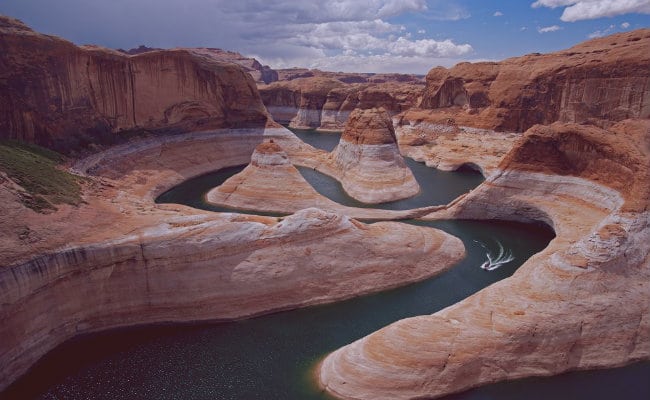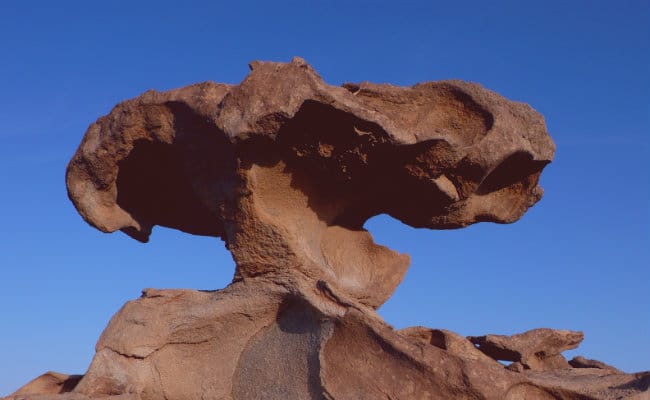The main causes of the processes known as erosion are the natural factors that the earth presents, as well as depending on these it is classified in order to determine what type of erosion is being treated, or is going to be treated.
Erosion is characterized by mobilizing or transporting soil spaces, which due to the events that caused it could now be only pieces of it, as well as the process of erosion that the soil may have.
Definition of erosion
This occurs when the soils naturally wear out, or also because of some factor of nature such as water, wind or ice, transporting the material contained in a place, and dispersing it arbitrarily.
It should be noted that erosion is the main cause of the geographical movements that give life to the world map today, having turned a super continent into 5 of them, totally different, it is also responsible for originating places such as valleys, caves, cannons among others.

Types of erosion
Erosion can be classified according to the factor that originated it, as well as whether it was a natural process or human intervention, studying every detail of what happened, and the environment around it, and its changing characteristics.
1. Gravitational
It is a type of erosion that, as its name suggests, is responsible for studying the erosion process caused by the gravitational force of the planet, and how it affects, wears or moves the soil from the earth's surface.
2. Wind
It is about the mobilization or wear of the soil or rocks due to the wind, which can carry large amounts of dust, although it cannot carry it in large amounts of distance.
This type of erosion is characterized by the remodeling and location of the soil, but only speaking of materials such as dust, sand or earth, because this is the only one that the wind can move, when talking about normal parameters of course.
3. Water
This refers to the transport of materials such as rocks, due to the influence of water, having as a result that it tends to be mostly flat, the raindrops generate that the soil particles are segmented, sedimented and segregated, the current one is It is affected by climatic factors such as rain.
The main reactor of this kinetic process is the application of energy from the drop of water, on the surface of the soil.
Water erosion is divided into several types, due to how extensive this process is, and the different ways in which water carries or wears off soil materials.
Types of water erosion
- Tunnel erosion: They occur due to the collapse of the soil or its subsidence due to stagnant water in underground levels, which can also be caused by the existence of soluble materials among those that make up the soil of a certain place.
- Erosion by fluvial deposits: It happens when a main channel applies a current contrary to that of its own sediments, causing wear and tear and complete mobilization of the soil structure.
- Laminar erosion: It selects the lightest particles that the soil contains, taking them away to leave a very large wear on it, only leaving behind the particles with greater volume, this is characterized by being the least perceptible and in turn the most widespread.
- Stream erosion: In this type, the water applies and concentrates all its kinetic energy to extract its erosive power and focus it on a channel, which can be divided into three types, such as furrows, gullies, gullies and ravines.
The ravines and gullies: They are places where the water begins to change direction, descending.
The trickles: their process is very similar to that of laminar erosion, and they are usually really small and easy to handle processes.
The grooves: which simply refers to water moving materials from the ground such as stones and rocks.
4. Glaze
It is made up of all the elements that erosion implies, which are caused by the movements of the ice masses, and their possible changes, such as structure growth or decrease due to melting.
5. Because of man
Better known as the type of tillage erosion, because it involves all the jobs that humans practice on the earth's surface, such as agriculture, industrialization, construction, among other things.
It is also recognized as anthropic erosion, and some examples of this type could be the practice of agriculture in hills, tilling them, the overpopulation of livestock in a given space of the earth, which can cause irreparable damage to such surfaces as the loss of regeneration of grasses and grasses.
Even the deforestation processes for the consumption of raw material that it can offer, which has caused damage to the soils in which work has been done, as well as the constant forest fires, due to global warming that incinerate every possibility of life.

Most common causes of erosion
There are several relevant causes in terms of the erosion process, and everything that it involves, which have to do with the typography of the places, the materials from which the soils are composed, and the factors that affect it, which can be of natural origin or not.
Relief
These are the main factor in most erosion processes, especially those that act through water, since some of these have a greater effect on specific typographic slopes.
Eroded surfaces
This refers to materials or soils, which have already undergone erosion processes, gradually wearing down those mentioned over time, which is also affected by the type of material in which the soil or rocks are composed. of the place, and its durability.
Human causes
Basically caused by all the factors that were described in human-caused erosion, such as global warming, an effect generated by the pollution caused by the human race due to the amount of waste that they accumulate, as well as the industrialization process, and urbanism that is growing exponentially, and in turn, while these are being built, the soils of these places are irreversibly damaged.
Negative effects
The soils would become arid and desert, which implies that they would not have the necessary resources for accretion and the stabilization of vital support in that area, which would cause greater loss of the species that inhabit the earth, including the risk that the race would run. human.
According to studies carried out by world organizations, currently 35% of the entire earth's surface is already considered desert, despite the almost impossible climatic conditions, there are still societies that inhabit these deserts, although they are going through critical situations of lack of food and water, which are vital for a community to establish itself.
Thanks for the content of the text. I apply it for being in a Guayana City where many gullies originate with ease.